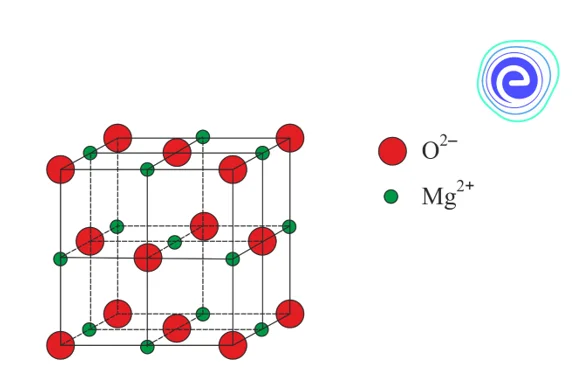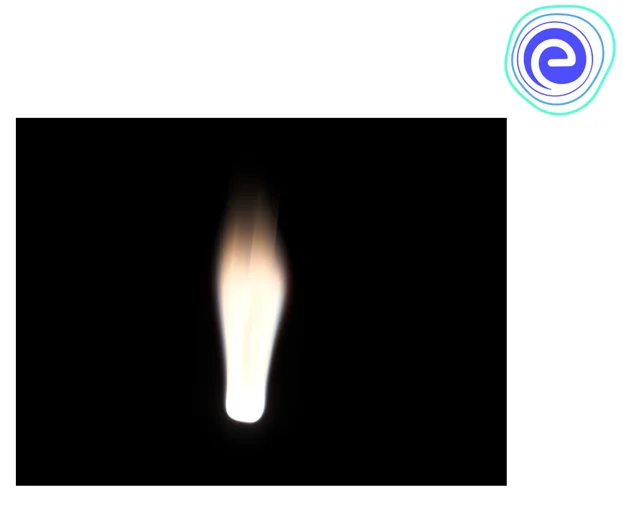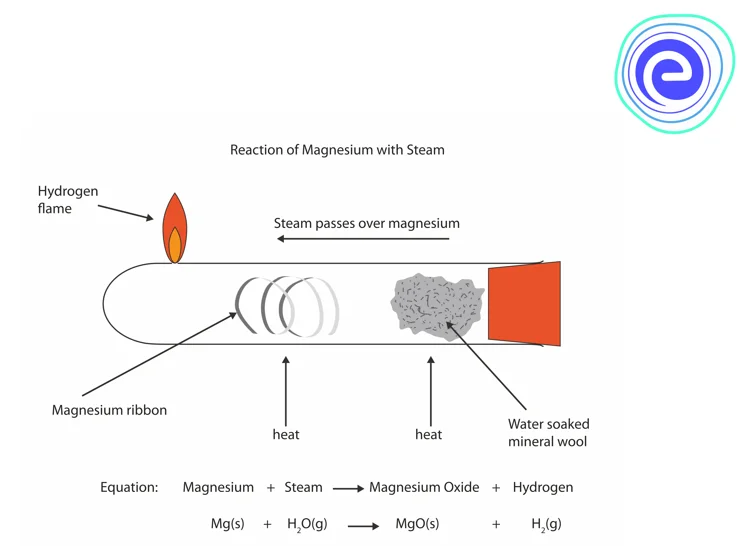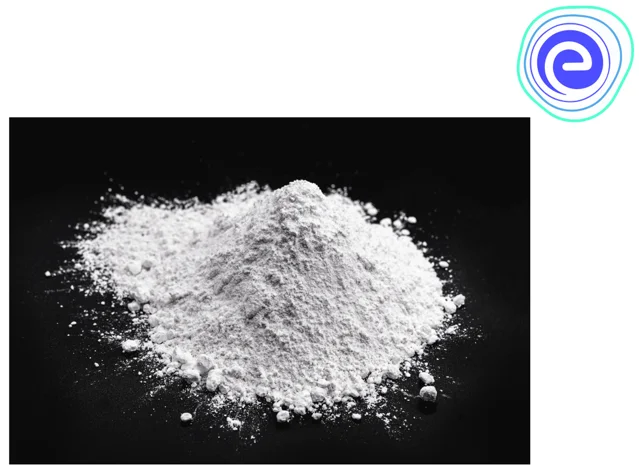Earth's Magnetism: Did you ever lose the sense of direction on any trekking? In such a situation, a magnetic compass will come to your rescue;...

Earth’s Magnetism: Definition, Cause, Theory
January 22, 2025
Magnesium Oxide Formula: Magnesium oxide, also known as ‘Magnesia,’ is an ionic compound formed by the metal (Magnesium) and non-metal (Oxygen) by transfer of electrons between \({\rm{M}}{{\rm{g}}^{\rm{ 2+ }}}\) and \({{\rm{O}}^{{\rm{2 – }}}}\). The chemical formula of Magnesium oxide is \(\mathrm{MgO}\). It exists as a white hygroscopic solid that occurs as minerals in nature as ‘periclase,’ a mineral of magnesium that exists along with metamorphic rocks in the form of the “oxide of Magnesium.” Magnesium oxide \({\rm{(MgO)}}\) is abundantly present on the earth in the form of rocks such as Dolomite, silicate, and magnesite. Magnesium oxide is also present in the seawater and is produced mainly by the calcination of magnesite or magnesium carbonate \(\left(\mathrm{MgCO}_{3}\right)\)
In this article, let’s discuss everything about magnesium oxide chemical formulas with their properties and uses.
Magnesium oxide \({\rm{(MgO)}}\) is an ionic compound formed by the transfer of valence electrons of both Magnesium and Oxygen. Magnesium is electropositive in nature and has two valence electrons, and as Oxygen is more electronegative, it tends to attract valence electrons towards itself, whereas the Magnesium atom tends to donate its two valence electrons to form its stable electronic configuration. As a result, a strong electrostatic force of attraction holds the cation \({\rm{(M}}{{\rm{g}}^{{\rm{2 + }}}})\) and anion \({\rm{(}}{{\rm{O}}^{{\rm{2 – }}}})\) together to form an ionic bond in \({\rm{MgO}}\)
Study Magnesium Chloride Formula Here

The crystal lattice of magnesium oxide has an octahedral geometry; it is ‘Halite‘ in shape, having a lattice constant of “\({\rm{a}} = 4.212\,\mathop {\rm{A}}\limits^{\rm{o}}\)”. In which \({\rm{M}}{{\rm{g}}^{{\rm{2 + }}}}\) and \({{\rm{O}}^{{\rm{2 – }}}}\) ions are tightly bounded, giving rise to their high melting point.

The physical properties of magnesium oxide are explained below:
| Chemical formula | \({\rm{MgO}}\) |
| Common Name | Magnesia |
| Molar Mass | \(40.304 \mathrm{gmol}^{-1}\) |
| Physical Appearance | White powder |
| Melting Point | \(2852^{\circ} \mathrm{C}\) |
| Boiling Point | \(3600^{\circ} \mathrm{C}\) |
| Density | \(3.6 \mathrm{gcm}^{-3}\) |
| Crystal Structure | Halite (Cubic) |
1. By Calcination of Magnesite
Calcination of Magnesite or magnesium carbonate \(\left(\mathrm{MgCO}_{3}\right)\) is the most common method used to produce magnesium oxide. A kiln with variable temperature is used for magnesite calcination, where it decomposes into magnesium oxide, and carbon dioxide gas is released.
MgCO3 + Heat → MgO+CO2
2. By Calcination of Magnesium Hydroxide
Calcination of magnesium hydroxide includes heating a filter cake containing \(50–72%\) solid magnesium hydroxide solids at around \(350^{\circ} \mathrm{C}\)
MgOH2 + Heat (350℃) → MgO+H2O
3. From Dolomite
Dolomite \(\left[\mathrm{CaMg}\left(\mathrm{CO}_{3}\right)_{2}\right]\) is an anhydrous carbonate mineral composed of calcium magnesium carbonate; Magnesium oxide is extracted from Dolomite powder by treating it with sulphuric acid to convert the lime to insoluble \(\mathrm{CaSO}_{4}\) and the magnesia or Magnesium oxide to soluble \(\mathrm{MgSO}_{4}\). The product was separated by filtration and by the same procedure, \(\mathrm{MgSO}_{4}\) was converted to \(\mathrm{MgCO}_{3}\) or \(\mathrm{Mg}(\mathrm{OH})_{2}\) and then calcined to \({\rm{MgO}}\)
Magnesium oxide, as an excellent basic oxide, can be used as an antacid to treat indigestion, heartburn, and sour stomach. Magnesium oxide is also given to patients before surgery because it serves as a laxative in the short term, allowing for faster stool emptying. Magnesium oxide is also utilised in crackers because the production of \({\rm{MgO}}\) causes magnesium to burn with a very bright white flame in the air. It is used to enhance the overall brilliance of the pyrotechnics by adding appealing white sparks.
Thus magnesium oxides have several uses in industries, medicines, as well as in our daily life. Some of them are given below:

Magnesium ribbon burns to form Magnesium oxide, which produces dazzling white light of high intensity. It is an exothermic process.
Let’s discuss an experiment based on the burning of Magnesium ribbon:
Magnesium reacts with steam to produce Magnesium oxide. Magnesium (in the form of Mg ribbon) slowly reacts with water (steam) to produce the metal oxide, and hydrogen gas is released.

In short, Magnesium oxide is a basic oxide of metal magnesium. It is an ionic compound having a chemical formula \({\rm{MgO}}\) that is held by strong electrostatic forces of attraction. In \({\rm{MgO}}\), Magnesium is a cation having a \(+2\) charge, and Oxygen is anion because of the \(-2\) charge. Due to this reason, instead of molecular geometry, the crystal lattice structure is studied. It has a similar lattice structure to \({\rm{Nacl}}\).
Magnesium oxide is a white, hygroscopic powder which means, it has the capacity of withholding water molecules from the environment by absorption or adsorption. It is present in nature in abundant quantity and is extracted from minerals such as Dolomite. \({\rm{MgO}}\) is also produced by calcination of Magnesite and Magnesium hydroxide. Due to ionic bonds, Magnesium oxide has a high melting point and boiling point. Because of this unique property to withstand high temperatures, it is widely used as refractory material in industries. Magnesium oxide is also very important in medicines as it is used as an antacid and laxative. It is also used in crackers due to dazzling white light produced due to the formation of \({\rm{MgO}}\) on burning magnesium in the air.

Multiple Choice Questions (MCQs) on Magnesium Oxide Formula
Correct Ans. (c) MgO
Hint: Oxygen accepts two electrons towards itself donated by the magnesium atom.
Correct Ans. (b) Dolomite
Hint: Chemical formula of this ore is CaMg(CO3)2.
Correct Ans. (a) White
Hint: The colour of MgO resembles the colour of milk.
Correct Ans. (d) All the above
Hint: In fireworks, blue, green, and white dazzling lights are imparted due to some chemicals.
Correct Ans. (a) Magnesium oxide
Hint: Oxygen is abundantly present in the air and oxidizes the metals exposed to it.
Correct Ans. (a) To remove Magnesium carbonate.
Hint: Magnesium is a very reactive metal. Hence, it slowly reacts with gases present in the air.
Correct Ans. (a) exothermic reaction
Hint: Magnesium ribbon burns in the air to produce an intense white flame.
Correct Ans. (d) All the above
Hint: Magnesium oxide is a highly reactive compound; it is a metal oxide and has a very high melting point and boiling point.
Correct Ans. (a) NaCl
Hint: Crystal lattice of Magnesium oxide is of rock salt type.
Correct Ans. (a) Red litmus paper will turn blue
Hint: All metal oxides have a higher pH value, i.e., between 8 to 14.
Q.1. What is magnesium oxide?
Ans: Magnesium oxide is an ionic compound formed from Magnesium and Oxygen. It exists as white, odourless powder. It is a metal oxide, thus basic in nature. It is used as an antacid to treat indigestion, etc.
Q.2. Why is the formula of magnesium oxide, MgO?
Ans: Magnesium oxide is an ionic compound formed by the transfer of valence electrons. As Oxygen is more electronegative, it tends to attract valence electrons towards itself whereas, the magnesium atom tends to donate its two valence electrons to form its stable electronic configuration. As a result, a strong electrostatic force of attraction holds the cation \(\left( {{\rm{M}}{{\rm{g}}^{{\rm{2 + }}}}} \right)\) and anion \(\left( {{{\rm{O}}^{{\rm{2 – }}}}} \right)\) together to form an ionic bond in \({\rm{MgO}}\). Thus, the formula of magnesium oxide is \({\rm{MgO}}\).
Q.3. What is the name for MgO2?
Ans: \({\rm{Mg}}{{\rm{O}}_2}\) is known as magnesium dioxide. It is another oxide of magnesium.
Q.4. Which is the best formula for magnesium oxide?
Ans: The best formula for magnesium oxide is \({\rm{MgO}}\). As magnesium donates its two valence electrons to Oxygen, forming a stable ionic compound.
Q.5. How is magnesium oxide different from magnesium?
Ans: Magnesium oxide is a compound of magnesium and Oxygen with the symbol \({\rm{MgO}}\) while; Magnesium is a pure element. It is a metal having the symbol \({\rm{Mg}}\) and atomic number \(12\). When \({\rm{Mg}}\) burns in the air, it forms \({\rm{MgO}}\).
Study About Magnesium Hydroxide Formula Here
We hope this article on Magnesium Oxide Formula has helped you. If you have any queries, drop a comment below, and we will get back to you.